
About Andrew Cusack
 Writer, web designer, etc.; born in New York; educated in Argentina, Scotland, and South Africa; now based in London.
Writer, web designer, etc.; born in New York; educated in Argentina, Scotland, and South Africa; now based in London. read more
News
Blogs
Reviews & Periodicals
Arts & Design
World
France
Mitteleuropa
Knickerbockers
Argentina
The Levant
Africa
Cape of Good Hope
Netherlands
Scandinavia
Québec
India
Muscovy
Germany
Academica
Scotland’s Three Parliaments
All of Them More Beautiful than the Current Parliament Building
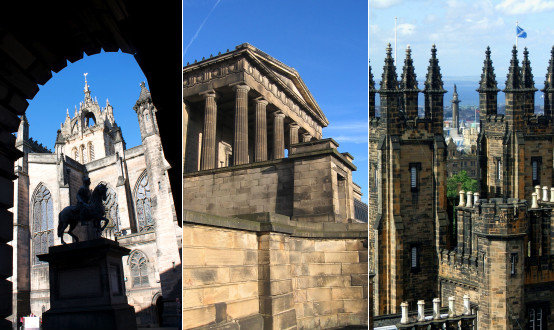
IT IS ONE OF those curious aspects of Edinburgh: its multiplicity of parliament buildings. The Estaits of Parliament, as they were known in the old days — consisting of the three estates of prelates, lairds, and burghers — first met in the Great Hall of Edinburgh Castle in 1140, though the first gathering of which we have primary source material was at Kirkliston in 1235, during the reign of Alexander II. The body led a somewhat peripatetic existence, meeting wherever was convenient, and even met for a year in St Andrews, where the building which housed it is still known as Parliament Hall. Indeed, that august edifice is home to the proceedings of the Union Debating Society, where the germinal gasbags of Scotland, and indeed of all three kingdoms, first enter the fray of political discourse.
In 1997, nearly three-hundred years after the Parliament was abolished, it was decided to bring it back, albeit in much reduced form. Great were the rumours and discussions about what effect the return of legislative power might have on the country, and Edinboronians pondered where the body might be housed. There were obvious choices, and less obvious choices, but in the end the Westminster government decided to go for the choice that hadn’t been suggested at all and built one of the most heinous offences against the sensibilities of taste that the land has ever seen. And so, the fact is that Scotland has three beautiful parliament buildings, none of which it uses.
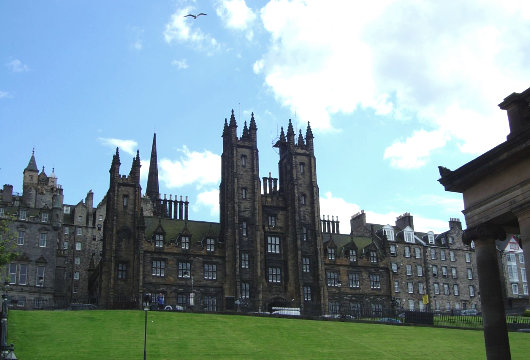
Because parliament buildings aren’t built in a day (the exception, of course, being the tent housing the Tynwald on the Isle of Man), it was necessary to secure temporary accommodation for the Caledonian legislators while their ugly new home was under construction. New College on the Mound proved a well-suited venue. It was built by the Free Church of Scotland to train dissident Calvinist ministers, but importantly also holds the Assembly Hall in which the Free Church’s governing body convened. After the Presbyterian churches re-united in 1929, the General Assembly of the Church of Scotland chose to hold its annual meetings here, and so it has generally become known as the General Assembly Hall.

In the old days, the annual convocation of the General Assembly was quite a whirl on the social calendar of Edinburgh. The Lord High Commissioner — the Sovereign’s Deputy to the State Church — held court at the Palace of Holyroodhouse, and was even authorised to fly the Royal Standard of Scotland from the tower. Since the Parliament had been abolished, and with it the annual ‘Riding of Parliament’ procession that opened the legislative year, the General Assembly week arguably replaced the opening of parliament as the annual high occasion of state in Edinburgh.
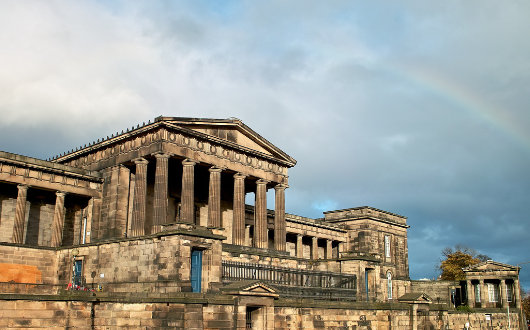
It had been wide supposed, before Labour announced otherwise, that the Scottish Parliament would meet in New Parliament House on Calton Hill. It was built from 1826 to 1829 to house the Royal High School, founded 1128 and one of the oldest schools in Scotland. The design was by Thomas Hamilton, who modelled the great hall in the middle after the Hephaisteion of Athens. Edinburgh, traditionally a centre of philosophy and learning, has been known as “the Athens of the North”, and the architects of the eighteenth and early nineteenth centuries were keen on drawing an architectural suggestion of Greek learning. Rather disappointingly, it was decided that the beauty of the view from Calton Hill would prove too great a distraction for schoolboys, and so the main schoolrooms that flank the great hall on either side were built with skylights instead of windows.

The Royal High School left Calton Hill for more expansive, though modern, premises in Barnton in 1968. The City Council sold the building to the Scottish Office, who refurbished it to house the devolved Scottish assembly whose creation was planned to take place after the 1979 devolution referendum. The referendum failed to gain enough votes to support the new assembly, however, and so the assembly was never born. The Scottish Office had already renovated the school’s great hall into a legislative debating chamber, however, and it was at this time that the building became known as ‘New Parliament House’, despite never having housed a parliament. In 1994, Edinburgh City Council bought the Old Royal High back from the Scottish Office for £1.75 million.
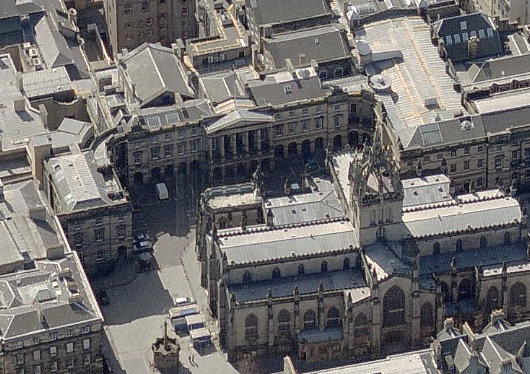
But the grandpappy of all Scottish parliament buildings is undoubtedly Parliament House, often called Old Parliament House to distinguish it from the others. It sits on Parliament Square in the very heart of the Old Town of Edinburgh, right next to the High Kirk of St. Giles. It’s oldest part, Old Parliament Hall, was built in 1639 and has a hammerbeam roof of Scandinavian wood. The building we see today is the result of a gradual evolution, with new bits being added on through the centuries, until we arrive at the handsome classical façade which unifies a rather hectic interior.
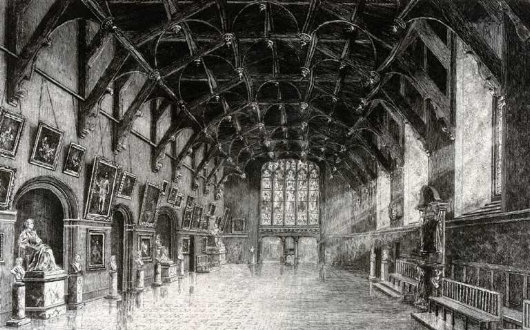
After the 1707 abolition of parliament, Parliament House was handed over to the courts. It houses the Court of Session, Scotland’s supreme civil court, as well as some sittings of the High Court of Justiciary, Scotland’s highest criminal court. Scotland’s lawyers are divided into advocates and solicitors, who are gathered into independent bodies respectively known as the Faculty of Advocates and the Society of Writers to Her Majesty’s Signet. The Advocates’ Library sits within Parliament House — it’s non-legal collection was removed in the 1920s to form the seed of the National Library of Scotland — as well as the Signet Library.
Each one of these buildings is worthy of further exploration in and of themselves (and I hope to eventually write on each of them in particular). Each of them, furthermore, has numerous qualities that would make it a suitable home for Scotland’s parliament. The General Assembly Hall enjoys a prominent location, from the Old Town looking out towards the New. But the Church of Scotland made clear from the outset that it was loath to deprive itself permanently of its complex in the center of Edinburgh. New Parliament House is a stately and dignified edifice in a classical style which has become almost native to Scotland. Opponents claim there are security concerns or not enough space, but these could be easily overcome. Finally Old Parliament House has the weight of history upon its shoulders. What better place for the government of Scotland to convene than the hall where its ancient predecessor met?
There’s no doubt that the demerits which could be laid against all of these buildings combined still argue in their favour against the ridiculous monstrosity erected insultingly close to the Palace of Holyroodhouse, ugly from every angle from which it has ever been viewed. Despite the £414m pricetag of constructing the new parliament (first estimated to cost £10m-£40m), Scots rejoice that it is already falling apart, and indeed not long ago one of the strange stalactites hanging from the ceiling of the plenary chamber fell to the ground, nearly taking an MSP or two with it. Perhaps some day in the future, when sanity is regained, we might see the end of the Holyrood Parliament? I have no higher hope.
Search
Instagram: @andcusack
Click here for my Instagram photos.Most Recent Posts
- Burns Tower April 19, 2024
- Patrick in Parliament March 18, 2024
- Articles of Note: 13 March 2024 March 13, 2024
- Cambridge March 9, 2024
- Taken on Trust March 4, 2024
Most Recent Comments
Book Wishlist
Monthly Archives
Categories



When that beam came down, it did so in the direction of the very few Conservative MSPs. Perhaps it was a Labour plot?
Cusack, you’re a reactionary. That said, every time I see the current Scottish Parliament building, I, in an honest reflex of confusion and non-recognition, exclaim, “What the hell is that?!”
Regarding concerns of space, why not reduce the number of bureaucrats? Perhaps the security concerns could thereby be alleviated as well. Competent government would also help.
Unfortunately it is not going to be an easy task to get rid of a building, monstrous though is it, which cost £414.4m. I would suggest auctioning off the prize of being allowed to push the plunger on the dynamite fuse box as a possible way of making back some of the squandered money. There must be a wealthy tycoon out there who has a sense of decency and taste – surely?!
Adrian! That was my suggestion which you have blatantly stolen!
They really spent £414.4m on the New Parliament House? And there was not a revolution?
Not on New Parliament House, but on the current Scottish Parliament Building.
It puts paid to the Scots’ reputation for being stingy, for one thing.
Somehow in the heat of the nationalist fervor critical spirit deserted Scots, and the lone voices who raised against the mostrosity were condemned by the intelligentsia as reactionary.
What, what, what? I remember out tète à tète slightly differently. I had better publically proclaim my latest ides for the future ‘Scottish Senate’ before such outrageous accusations are made against my good name. again! Lower Parliament Hall, basking in the glory of the restored Cathedral (£400m ought do it!), should house the Senate. Can you think of a better place, nestled between the academia of the University and the glory of the Cathedral, for the future upper house to sit? Detached from the worldliness of Edinburgh, the Senate could scrutinise, adequately, the legislation being passed to it from New Parliament House. The Union Debating Society and the University would, of course, have access when the chamber was not in session.
Plus, they could not argue against a direct train link between Edinburgh and St. Andrews if my idea were to be implemented, could they?
Were one to have a senate, then I would support your idea, but I tend to frown on the bi-cameral concept for Scotland. Unlike in England, where eventually the 1st & 2nd estates met in one chamber (the Lords) and the 3rd estate in another (the Commons), Scotland’s parliament was traditionally unicameral.
Why not allow the Scottish peers to elect, say, 16 or so of their number to sit & vote in parliament? Of course, this would not solve the problem of lacking a more reticent, smaller upper house to scrutinise legislation. There could be several solutions to this. One could simply have a single house sitting together but require majorities from two different parts of it in order for bills to be passed.
One can imagine a lower section composed of members elected for small constituencies via first-past-the-post, complemented by an upper section of representative peers elected by the Peerage of Scotland alongside more regional members, perhaps elected by PR, perhaps also in a non-party election, to serve longer terms of office.
I wonder if perhaps we might also allow non-Representative peers to sit in and debate in Parliament, without allowing them a vote on legislation.
I have further ruminations on this matter, but the dinner gong has been struck.
The “ridiculous monstrosity” you linked to is just that – a monstrosity. It looks like a particularly hideous piece of council housing. For the terminally tasteless, preferably.
I’d suggest holding a lottery with the first prize being what Adrian and/or Andrew suggested. I cannot imagine the proud Scottish nation being opposed to such a noble undertaking.
I agree that the current structure should be razed to the ground, in as unsubtle a manner as possible.
I can’t wait until the day that I can watch its destruction in every popular documentary on Scotland, like the Swastika atop the Zeppelin Feld.
(If I may:
http://www.youtube.com/watch?v=MJzdgZ1lOTA
)